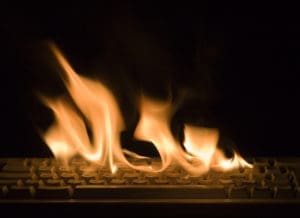 The Flame virus first achieved infamy in May 2012, shortly after the United Nations’ International Telecommunications Union asked a security company to look in to the hacking of Iranian computers.
The Flame virus first achieved infamy in May 2012, shortly after the United Nations’ International Telecommunications Union asked a security company to look in to the hacking of Iranian computers.
Although not widespread — only a few hundred computers are thought to have been infected — Flame’s powerful reach could only be rivaled by the sort of virus found in Hollywood movies.
As a backdoor virus, Flame avoided proper authentication channels as it captured all matter of sensitive information. As a Trojan, Flame disguised itself as a Microsoft software update. As a worm, Flame could easily spread to other systems in a computer’s network.
Flame’s superpowers
- Snap screenshots of infected computers.
- Secretly record conversations using the computer’s built-in microphone.
- Use the computer’s Bluetooth to snag contacts from other nearby Bluetooth-enabled devices.
- Log keystrokes to capture usernames and passwords.
The individual behind the attacks
So, who could be behind such a sophisticated threat? To date, no one has taken credit, but experts believe it must have been a nation-state. It certainly wasn’t programmed by a hobbyist teenager. Given the virus’ target — the Middle East, with special mention of the Iranian Oil Ministry and the Iranian National Oil Company, most experts believe the United States and Israel jointly developed Flame.
Analysis of the code revealed it mirrored code used in Stuxnet, malware used by the U.S. government to infiltrate the Iranian nuclear system. Flame also used the uncommon Lua programming language — which, coincidentally, was used to program Angry Birds.
Photo: Dario Sabljak / Shutterstock
